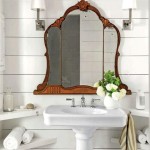Ancient Greek House Decorations
The ancient Greeks were renowned for their exquisite taste and creativity, which extended to the decoration of their homes. Greek house decorations were an integral part of everyday life, showcasing the family's wealth, status, and personal preferences. The following article explores the diverse range of decorative elements used in ancient Greek houses, providing insights into the aesthetics, beliefs, and traditions of this remarkable civilization.
Murals and Paintings: One of the most striking features of Greek houses was the presence of elaborate murals and paintings that adorned the walls. These artworks depicted various scenes, from mythological tales to domestic life, and often incorporated bright colors, geometric patterns, and intricate details. Murals and paintings not only enhanced the beauty of the home but also served as a visual narrative, reflecting the family's history, beliefs, and aspirations.
Terracotta Reliefs and Sculptures: Terracotta, a type of fired clay, was widely used in Greek house decorations. Reliefs and sculptures made from terracotta were popular, featuring mythological figures, animals, or everyday objects. These decorative elements added depth and texture to the walls, creating a sense of grandeur and opulence. Some terracotta reliefs depicted scenes from Greek mythology, while others showcased domestic activities or agricultural practices.
Mosaics: Greek mosaics were renowned for their artistic beauty and durability. Skilled artisans created intricate floor and wall mosaics using small pieces of colored stone, glass, or ceramic tiles. Geometric patterns, floral motifs, and figural compositions were common subjects, adding color and elegance to the interior spaces. Mosaics not only served as decorative elements but also protected the floors and walls from moisture and wear.
Furnishings and Textiles: Furniture played a significant role in Greek house decorations. Beds, chairs, tables, and chests were crafted from wood, bronze, or marble, often adorned with intricate carvings or inlays. Cushions, pillows, and blankets made of colorful fabrics added comfort and warmth. Greek textiles were highly prized for their fine weaving, vibrant colors, and decorative patterns. They were used as curtains, tapestries, and upholstery, contributing to the overall ambiance of the home.
Lighting: Greek houses were typically lit with oil lamps, which provided a warm and flickering light. These lamps were made from clay, bronze, or glass and came in various shapes and sizes. Some lamps were decorated with elaborate designs, while others were simple and functional. Candles and torches were also used occasionally, but they were not as common as oil lamps.
Plants and Flowers: Greeks valued nature and incorporated plants and flowers into their home decorations. Pots or baskets filled with blooming flowers, herbs, or fruit trees added a touch of freshness and beauty to the interiors. Courtyard gardens were also popular, providing a tranquil and shaded space for relaxation and socializing.
Importance and Symbolism: The decorations in ancient Greek houses were not merely aesthetic adornments; they held cultural and symbolic significance. Murals and paintings depicted mythological scenes that reinforced religious beliefs and celebrated heroic virtues. Terracotta reliefs and sculptures symbolized wealth, prosperity, and religious devotion. Mosaics incorporated motifs that represented fertility, abundance, and good luck.
Variations and Influences: Greek house decorations varied depending on the time period, region, and social status of the family. Wealthy Athenians displayed elaborate and luxurious decorations, while humbler homes in rural areas had simpler and more functional adornments. Greek decorative styles influenced later civilizations, including the Romans and Byzantines, and continue to inspire contemporary interior design.
In conclusion, ancient Greek house decorations were a testament to the creativity, artistry, and cultural values of this influential civilization. Through their murals, sculptures, mosaics, furnishings, and textiles, the Greeks created beautiful and meaningful spaces that reflected their beliefs, aspirations, and everyday lives. The decorative elements used in Greek houses not only enhanced the aesthetics of the home but also served symbolic and practical purposes, providing a glimpse into the richness and diversity of ancient Greek culture.

Future Past Ancient Greek Style Metrospace Design

Decorating Theme Bedrooms Maries Manor Ancient Greece Greek Bedroom Themes Interior Design
:max_bytes(150000):strip_icc()/199202501_129987179227706_4503755971754969807_n-52753ac5c52b4af9ba865af4da276967.jpg?strip=all)
How To Add Ancient Greece Flair Your Decor

Pin On H O M E

Future Past Ancient Greek Style Metrospace Design

House Interior With Ancient Greek And Byzantine Tradition Decoholic Design Home Decor

36 Ways To Incorporate Greek Design Into Home Decor

All You Ve Wanted To Know About Ancient Greek Homes Oldest Org

Architectural History Ancient Greece Part 4 Domestic Buildings Greek Furnishings Design Fashion Blog

Ancient Greek Interior Design Portfolio Layout Homes







